Gardening worldwide is undergoing a sea change as ecological considerations become more influential in our garden-making decisions.
Habitat
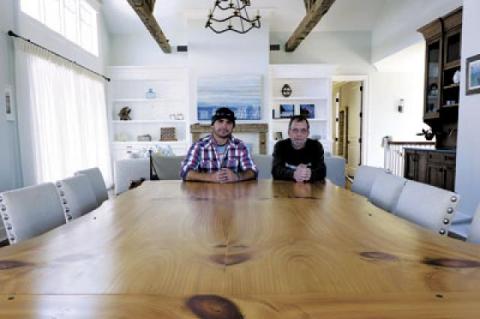 The Stories These Walls Could Tell
The Stories These Walls Could TellIf these walls could talk. . . . It’s a cliché everyone has heard, but when you’re dealing with lumber salvaged from a 170-year-old textile factory in Eufaula, Ala., a 19th-century barn in Elizabethton, Tenn., or a 200-year-old barn from Greencastle, Pa., that cliché takes on a whole different meaning.
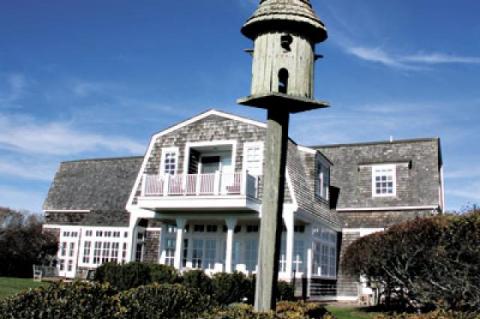 Touch of Old England in East Hampton
Touch of Old England in East HamptonPosts and beams, roughly hewn some 500 years ago and showing adze strikes still, have a suitable new home, an unpretentious second home resembling a hunting lodge, what with its ample wood paneling, stuffed game birds, paintings of foxes and hounds and fly-fishing streams, fireplace just right for a curled-up English spaniel, and suggestive of cigars, snifters of brandy, long guns propped in a corner.
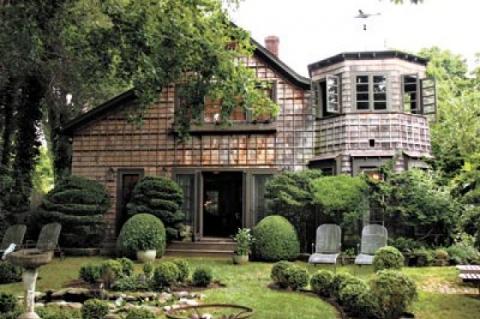 Touched by Fairy Tales
Touched by Fairy Tales“I want visitors to go further and further down the rabbit hole.” So said the artist Dianne Blell as she introduced a visitor to the evocative mixture of objects, colors, passions, and practicality in both the garden and interior of her house in Bridgehampton. Her second-home world reflects the aesthetic of her art — meticulous photographs that comment on grown-up fairy tales ranging from classic myths to haute couture. Once upon a time (24 years ago), she spotted the house from a real estate agent’s car.
Gardening, so it is said, is the manipulation of nature. However, some of the most electric, as well as subtle, compositions within a garden can occur through happenstance: The gardener introduces a packet of seed or a seedling given by a friend and nature takes over, often for decades afterward. It is the gift that keeps on giving. The golden California poppies in a sunny area in Calista Washburn’s East Hampton garden, for example, originated from a packet of seed scattered years ago.
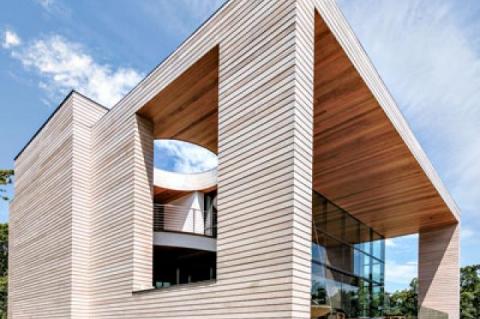 Views in a Two-Story Frame
Views in a Two-Story FrameWhy do people put frames around art? Aestheticians probably have Freudian answers, but obviously it has something to do with heightening the effect. Now the local architects Robert Barnes and Christopher Coy have done just that to one of the finest views in Amagansett, the vista from the top of the ridge that rises just as Route 27 leaves Amagansett for Montauk. The deep, rectangular frame that makes up the entire oceanfront side of the new house is a full two stories high.
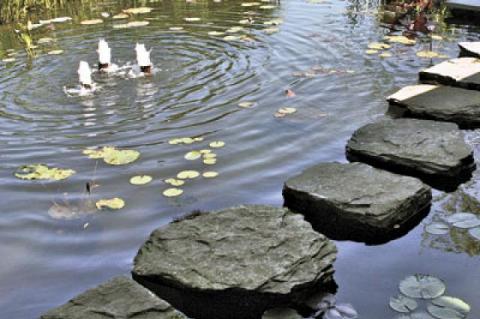 Want a Water View? Build a Pond
Want a Water View? Build a PondFor the garden that has everything, or so you thought, you can always give it a pond. Not everyone has a water view even though the East End is surrounded by water, but it is possible to create your own by building a pond. And many do. There’s something romantic about a pond: the lily pads, the scurry of fish, the croaking of frogs. So-called water features, which now ornament many a South Fork estate, come in many shapes and sizes.

